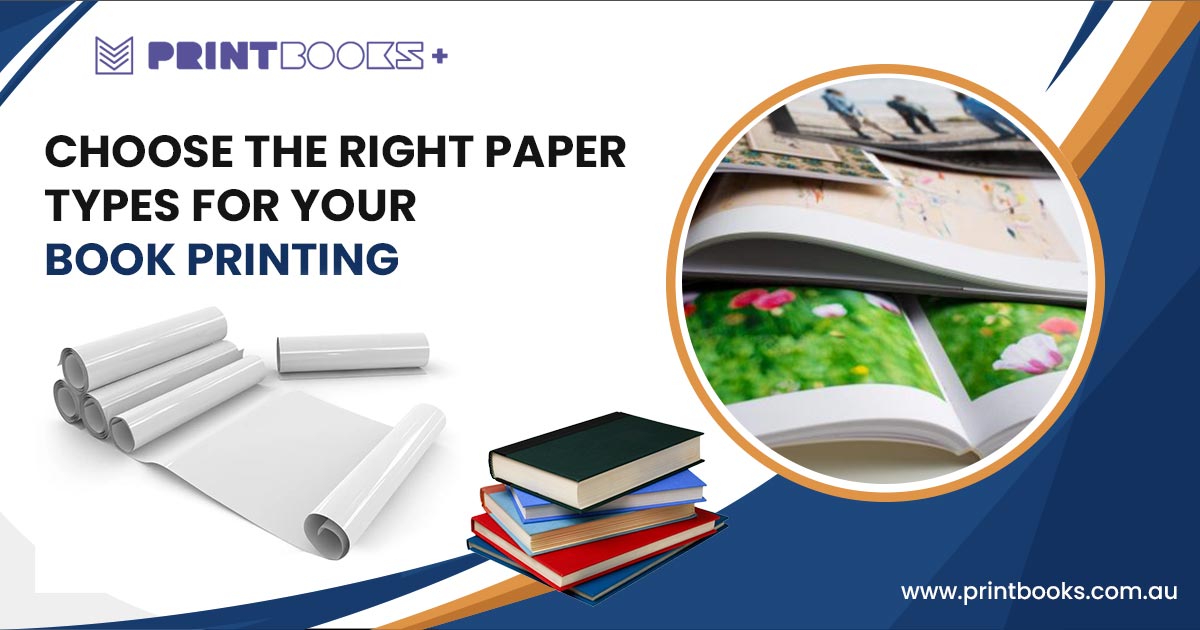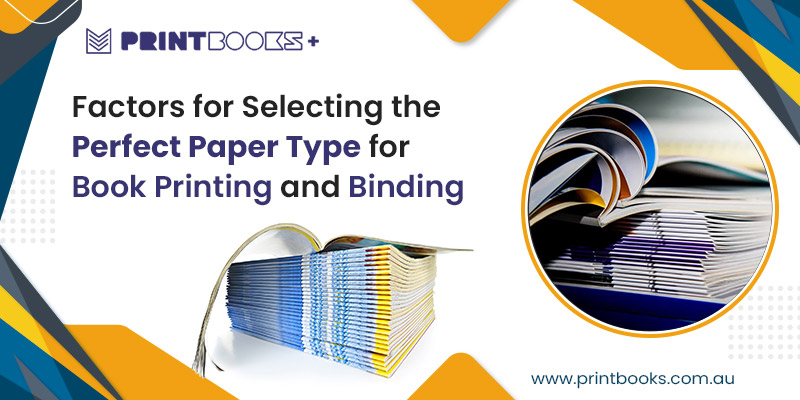Choose the Right Paper Types For Your Book Printing

Anyone can print a book but it takes an expert in printing to print a book that will make your reading experience magical. Only a book printing and binding expert will know the difference between various paper types, different binding styles, and most importantly where to use which type of paper and binding style.
Well, don’t worry about where to find an expert because you have already found one, Printbooks. Our expertise in custom book printing will be reflected in the services we offer. Even though printing the perfect book is the goal there’s a lengthy process behind printing the perfect book.
We’ll slip in a few Printbooks secrets on how to choose the right paper type for your custom book printing in this blog.
Types of Papers Used in Custom Book Printing
The printed book’s overall appearance and quality can be greatly impacted by the paper selection. The following are some common paper types used in custom book printing:
Coated Paper
Gloss Art Paper:
It gives a perfectly shiny and reflective surface and a polished look.
Matte Art Paper:
Has a non-reflective surface yet offers an elegant look.
Uncoated Paper
Smooth Paper:
Suitable for novels and heavy textbooks as it offers a smooth and crisp finish.
Textured Paper:
Suitable for books with a rustic feel and art books.
Offset Paper:
it is often used for printing in black and white, is reasonably priced, and is suitable for books with a lot of text.
Speciality Paper
Recycled Paper:
Made from 60-100% recycled pulp and it’s a great choice if you’re conscious about the planet.
Photographic Paper:
Offers top-quality images and color reproduction. Suitable for photo albums
Synthetic Paper:
It is both water and rip-resistant. Best used for outdoor books because of its durability.
Factors for Selecting the Perfect Paper Type for Book Printing and Binding
When selecting the right paper type for custom book printing and binding, it is crucial to consider a few factors before finalizing everything.
Here is the list of factors that you should know:

Content and Genre
Paper selection for book printing is influenced by content and genre. For books with a lot of text, choose offset paper; for art books, matte art paper enhances the graphics; and for novels, glossy art paper gives a more sophisticated appearance. A seamless reading experience is ensured when paper and content are in sync.
Plan Your Budget
When choosing paper and binding options for book printing, consider your budget. Make decisions based on what you can afford to ensure cost-effectiveness while maintaining the required standards of quality and aesthetics.
Print Technology
Select paper that is compatible with the device being used for printing. The final print quality is influenced by factors such as ink absorption, drying time, and general compatibility, all of which add to a smooth and effective printing process.
Target Audience
Customize your book’s material and binding decisions to your target audience’s tastes. When writing a book, take into consideration factors like readability, visual appeal, and tactile experience to make sure your target audience finds it interesting and engaging as well.
Determine the Book Format and Size
Choose a paper that suits best the book’s size and format in terms of both aesthetics and functionality. Make sure the paper you choose fits well with the design so the finished product looks cohesive and elegant.
Pick Your Binding Styles
Select binding styles that match your book’s purpose and appear. The book’s durability and overall aesthetic appeal can be affected by choices like saddle stitch binding for a cost-effective alternative or perfect binding for a neat, glossy look. Choose a binding style that enhances the reader’s experience and matches your project’s goals.
Durability of the Print
When printing, take a look at the surroundings and the paper’s durability for frequent use. Choosing a book with durable paper will ensure that it endures creases and dents, extending its life and enhancing reader pleasure.
Printing Quantity
Analyze the necessary printing volume to determine the best approach. For larger runs, traditional offset printing is more affordable; however, print-on-demand services, which minimize extra inventory and offer flexibility, are better suited for smaller volumes. Decide the approach that best fits your distribution plan and the overall objectives of the project.
Print Proofing
To evaluate color accuracy and paper interaction, request print proofs. Before the book is printed, physical proofs are examined to make sure the paper type selection matches the design features and lives up to expectations.
Why Choose Printbooks for Custom Book Printing?
High level of Customization:
We have over 20 years of expertise, which makes us well-versed in this field. There are no limitations to customizing the book, we can make your visions into reality in the best quality.
Unique Design and Layout:
Our custom book printing allows you to make unique and distinct designs and layouts. We offer you complete control of the visual elements such as fonts, sizes, colors, images and format.
Diverse Book Formats:
With custom book printing you can choose the best cover that suits your book the best. From hard covers to special bindings, the entire book will be your wish.
In conclusion, choosing the right paper type is essential for effective book printing. Matte art paper delivers a subtle elegance for text-heavy material, offset paper offers an affordable choice for black-and-white printing, and glossy art paper highlights colorful images with a glossy finish. Make sure your selection fits the goal, subject matter, and intended aesthetic effect of the book for a captivating and profitable release.
Ready to craft your books with precision? Choose gloss for vibrancy, matte for elegance, and offset for cost-effective simplicity with Printbooks today, so that we can help you make the right choice!
